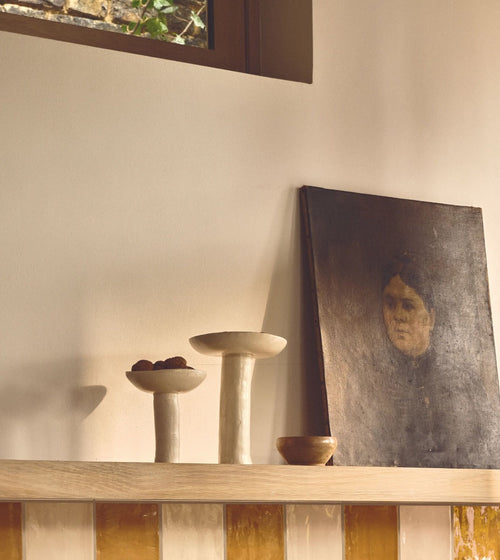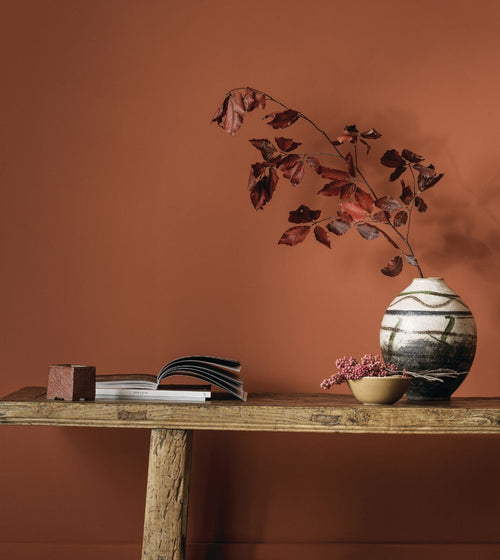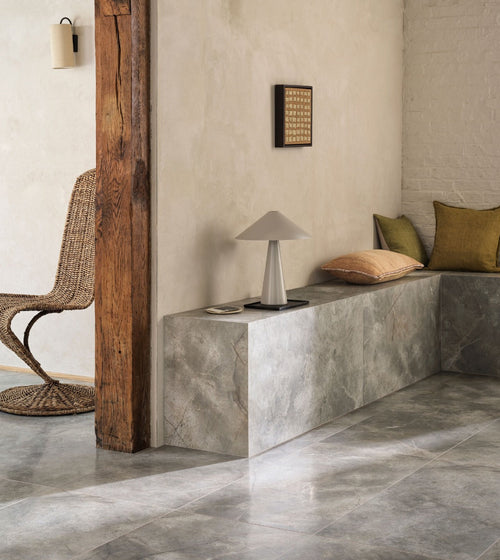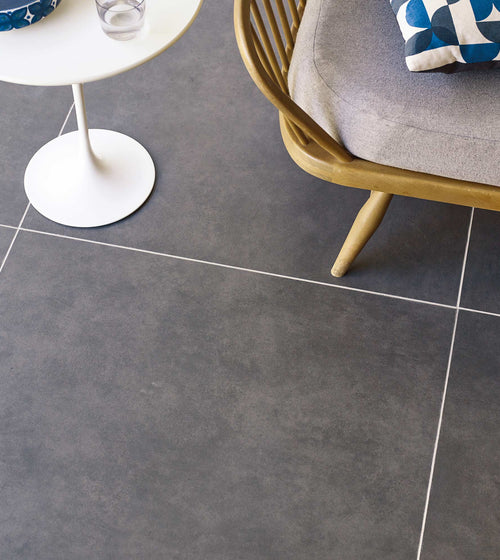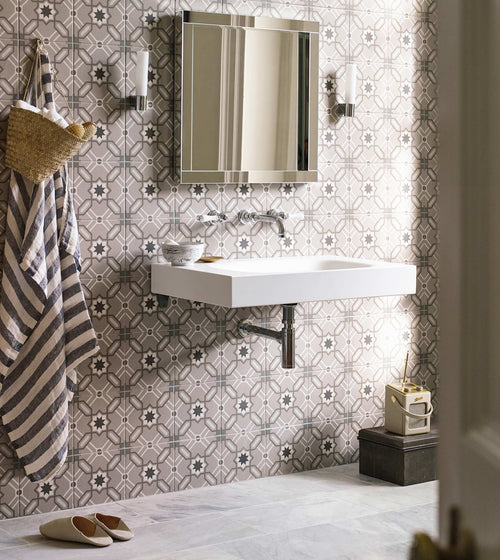Our top maintenance and cleaning tips for marble tiles | A guide to marble wall and floor tiles
Marble has remained a staple in home interior design. It offers a touch of luxury and is popular in areas such as kitchens, bathrooms, and hallways. Although marble is beautiful by nature, particularly with unique veining in each tile, proper maintenance and cleaning are important to preserve it after installation.
In this guide, we’ll offer insights into the best maintenance and cleaning solutions for your marble wall and floor tiles.
Click on the link to jump to that section:
- What to remember when installing marble tiles
- Our top tips for maintaining marble wall and floor tiles
- Our marble tile cleaning guide for floors and walls
- Which is better to maintain? - Natural marble vs marble effect
- Frequently asked questions
Discover what to consider when installing marble tiles and why you need a professional tiler.
Browse our top maintenance tips for using marble tiles in the home.
Discover the best ways to clean marble tiles to keep up their luxurious appearance.
Compare the advantages and disadvantages of both natural marble and marble effect tiles.
Read the most common queries on marble tiles.
What to remember when installing marble tiles
When installing marble tiles, it’s crucial to consider a few key factors to ensure their longevity and appearance.
Firstly, marble is a natural stone susceptible to staining and scratches and requires sealing, especially in high-moisture areas like bathrooms and kitchens. Selecting the right type of marble and an appropriate finish is essential. Polished marble offers a high-gloss, luxurious look but can be slippery when wet and may be more prone to scratches. Honed marble, with its matt finish, is more resistant to scratches and better suited for flooring.
Finally, to ensure proper installation, hire a professional tile installer. Look for a contractor with good reviews and experience in specifically tiling marble.
Our top tips for maintaining marble wall and floor tiles
Marble wall tiles
Maintaining marble wall tiles requires regular dusting and gentle cleaning to preserve their shine. Use a soft, dry cloth or a duster to remove dust particles that can dull the surface over time. For deeper cleaning, use a pH-neutral cleaner specifically formulated for marble. Avoid using acidic or abrasive cleaners, which can damage the stone’s surface. After cleaning, always dry the tiles with a soft towel to prevent water spots and streaks.
In areas like the bathroom, where marble wall tiles are exposed to moisture and soap, regularly wipe down the tiles afterwards. This prevents any build-up and water stains.
Top maintenance tips for marble wall tiles:
- Regular dusting and wiping
- Gentle maintenance products
Marble floor tiles
Marble floor tiles require more robust maintenance due to higher foot traffic. Regular sweeping with a soft broom or dust mop helps remove dirt and grit that can scratch the surface. Use a soft mop to clean the floors, and avoid excessive water, as marble is porous and can absorb moisture, leading to stains and damage. To reduce this risk, make sure to regularly seal the marble tiles to make them more water resistant.
Place mats or rugs in high-traffic areas and entryways to minimise dirt and grit from being tracked onto the marble floors. Ensure these mats have a non-slip backing to prevent them from moving and causing scratches. Use furniture pads under the legs of chairs and tables to prevent scratching and etching when moving them.
Top maintenance tips for marble floor tiles:
- Dry to prevent slips
- Avoid harsh chemicals
- Style the room with mats or rugs
Browse our entire range of tile maintenance and cleaning products here.
Our marble tile cleaning guide for floors and walls
As marble is a natural stone, it is known for being extremely durable. However, without proper care, these tiles can be damaged. Regular cleaning should become part of your routine to ensure the marble tiles maintain their luxurious appearance. Avoid using scouring pads or wire brushes, which may scratch the material, and use a marble-specific or gentle tile cleaner.
Marble wall tiles
Cleaning marble wall tiles involves a gentle approach. For routine cleaning, use a soft cloth dampened with warm water to wipe down the tiles. Use a PH neutral or specific marble cleaner for more thorough cleaning. Rinse with clean water and dry with a soft towel to avoid streaks. Use the towel to scrub the grout lines, ensuring everything is polished and sparkling.
Marble floor tiles
To clean marble floor tiles, start by sweeping or vacuuming to remove loose dirt and debris. Mop the floor using a PH neutral cleaner or specific marble cleaner, wringing out the mop to avoid excessive moisture. For regular maintenance, use a damp mop with plain water and dry the floor immediately to prevent water spots.
Which is better to maintain? - Natural marble vs marble effect
Though marble has its advantages, it can be more expensive and require maintenance, particularly in large areas. Known for its longevity and durable qualities, porcelain is a good alternative for homeowners to consider. Marble effect tiles can be used the same way as the natural stone material, both on walls and floors. The lookalike tiles replicate the iconic marble look, complete with veining while possessing the benefits of porcelain.
Compare the features of natural marble and marble effect tiles below:
| Feature | Natural marble | Marble effect tiles |
|---|---|---|
| Maintenance | Requires sealing and specific cleaning products needed | Easy to maintain with standard cleaners |
| Cleaning | Requires pH-neutral cleaners, avoid acidic or abrasive products | Can be cleaned with a wider range of products |
| Durability | Can be more prone to scratching and staining | More resistant to scratches and stains |
| Aesthetic appeal | Unique, natural patterns | Consistent look, mimicking natural marble |
| Cost | Higher due to material and maintenance | Generally more affordable |
While natural marble offers unparalleled beauty and unique veining, it requires more careful maintenance. Marble effect tiles, made from porcelain, are easier to maintain, making them a practical choice for busy households.
Find out more and how to maintain and clean porcelain tiles with our expert guide here.
Frequently asked questions
What types of stains affect marble shower tiles?
Marble shower tiles are susceptible to stains, primarily from soap scum, hard water deposits, and mildew. Soap scum forms a filmy residue that can dull the marble's surface, whereas hard water deposits leave behind white, chalky stains due to mineral content. Mildew and mould can develop in the grout lines and on the tile surface in high-moisture environments.
To prevent these stains, seal the marble tiles and regularly clean the tiles with a pH-neutral cleaner, squeeze the tiles after showering, and ensure proper ventilation to reduce moisture build-up.
